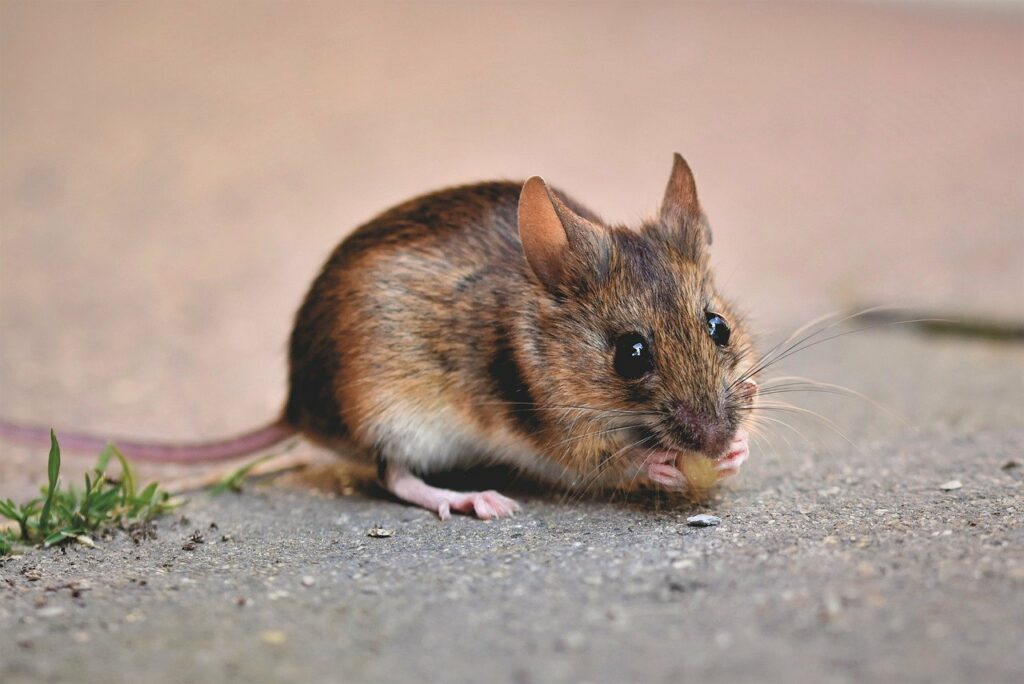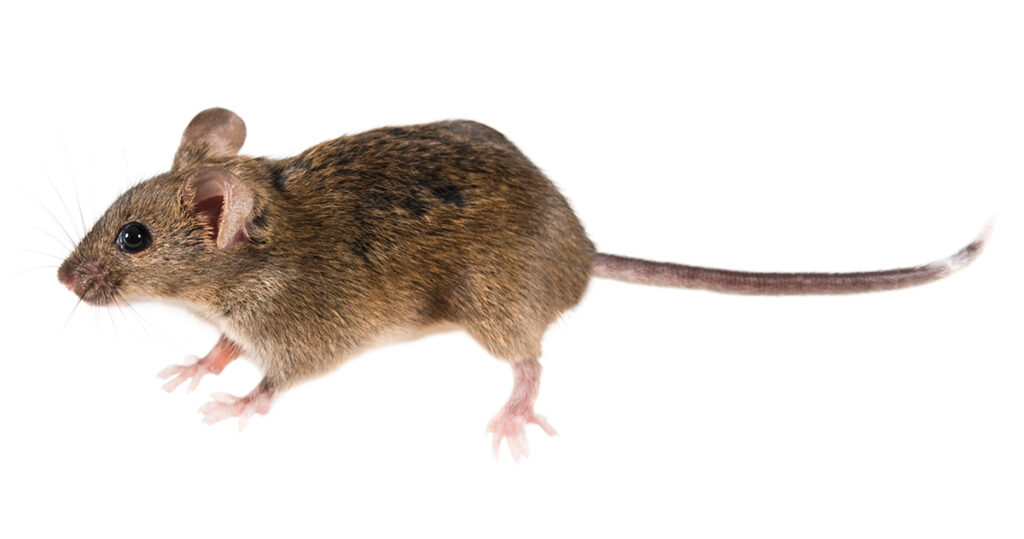HOuse Mice
(Mus musculus)
The house mouse is a small species of rodent found in a variety of habitats around the world. It and its relative, the brown rat, are among the most common rodents found in Bay Area homes. House mice are typically between 7.5–10 cm long with a tail length between 5–10 cm long. This Rodentia has huge rounded ears, a pointed snout, a short tail, and a short, thin, stocky body. They have very short legs and tiny, thin paws.
The mouse’s hairs are brown to grey with white tips. House mice have adapted to living in various human-made environments, such as cities, and are often found in human dwellings. They are often kept as pets, particularly children’s pets. In other instances they are a nuisances and a rodent pest control company is called. House mice can be distinguished from other similar rodents, such as the Norway rat (Rattus norvegicus), by their size and shorter tails.
Where Did House Mice Originate From?
House mice originated in Asia and India. Several hundred years ago, they were introduced to Europe by human traders. Since then, they have spread worldwide, inhabiting woodlands and buildings.

What Do House Mice Eat?
The house mouse is an omnivore, which means it eats plants and animals. Its diet consists of seeds, nuts, fruits, and plants, but it eats insects for protein and dead birds in the summer. House mice in the wild have been observed to scavenge carcasses of dead animals. They will also eat food such as insects and grains when it is available. In the winter months, house mice are common sewer scavengers, feeding on dead birds and other dead organisms.
What are House Mice's Habits?
House mice are nocturnal animals. They sleep in a safe place during the day, often close to a food source. At night they search for food and can travel as much as 600 feet to get it. They are agile jumpers and climbers and can easily climb up walls and along ledges. Mice can also swim up to 36 inches underwater, so they use this ability to get across streams or rivers if need be. House mice tend to live in groups, with the males being more territorial than the females.
Where Can I Find Mice in My Home?
House mice prefer eating and sleeping in dark places such as cardboard boxes, closets, and basements. They will burrow themselves under debris and in walls. They don’t like to be exposed to the light, so if you see one during daylight hours, it might be ill. House mice burrow themselves into small spaces and leave their feces behind them. These feces are made up of seeds and grains, attracting cockroaches who infest your home.
How Do House Mice Behave?
House mice have an excellent sense of hearing and sight, allowing them to maneuver around a building in search of food. They use these senses of perception to get out of the light when they hear or see something come close to them. Once they detect food, house mice return to their den and feed. House mice are sociable animals that live in large groups in their nests. They keep the same group together throughout their lives, mating with the adult males only once and remaining with them as a group until they die. The young are not purely dependent on adults for food and will often find food on their own.
Does a Mus Musculus Cause Diseases?
Norway rats and house mice are the two most common species of rodents involved in spreading disease. Mice can carry and transmit several pathogens that affect humans, including viruses, bacteria, fungi, and protozoa. Some of these diseases are zoonotic, which can be transferred from animals to humans. Diseases that can be transmitted from mice to humans include:
- Lymphocytic choriomeningitis: A virus found in about 30% of American house mice. The disease causes fever, headache, and increased blood pressure.
- House mice hepatitis: An illness primarily caused by the rodent Leptospira bacteria. It is on the list of the four most common infectious diseases transmitted to humans by animals in the United States.
- Monilia infections: Mice can carry many types of bacteria and fungal parasites that can cause infections in people. These diseases include ringworm, tularemia, histoplasmosis, and cryptococcosis.

House Mice (Mus musculus)
House mice are common by-products of human development. City dwellers often acquire these rodents to keep in their homes as pets. The impact of an infestation can be divided into two aspects; the first aspect is the damage these rodents can cause to a building, including structural damage and damage to electrical wiring; and the second aspect is the disease that may be transmitted through the infestation.









